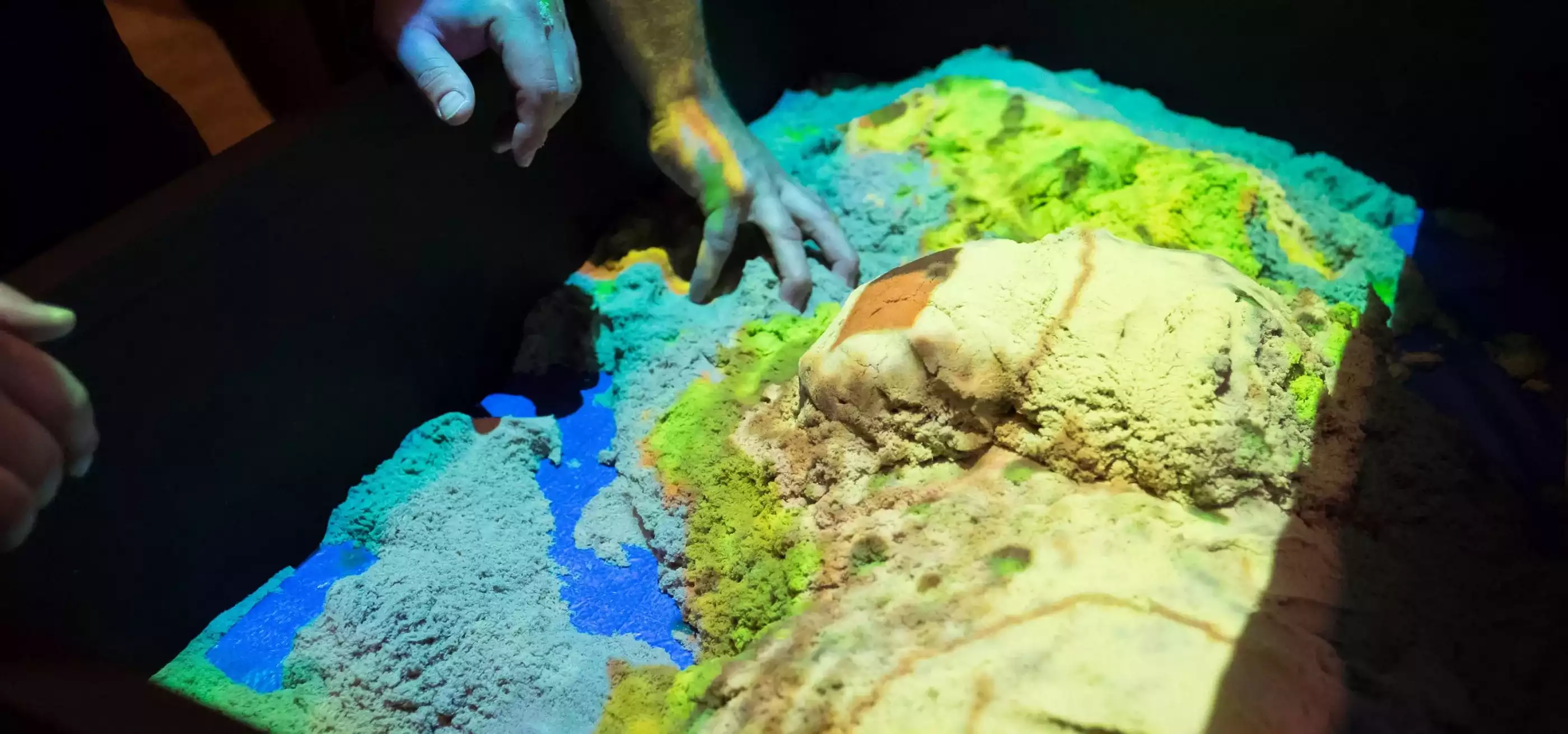The DigiPen students on Team Psylight wanted an easy-to-use system to design levels for their game project. The previous semester, they had developed a tower-defense game that ultimately didn’t meet their standards, so they went back to the drawing board and started from scratch. This time around, the team decided on a much less conventional medium for a video game: sand.
Using an Xbox Kinect, a projector, some two-by-fours, and a dozen buckets of Kinetic Sand, the team constructed a physical sandbox along the wall of the Edison computer lab. The sand is piled into a three-foot-by-three-foot enclosure; the Kinect and projector are suspended above the structure, pointing at the sand.
“The entire game is controlled by the sandbox,” explains the team’s lead designer, Taylor Riviera, a DigiPen student in the Bachelor of Science in Computer Science and Game Design program. “No controllers, no anything like that.”
To avoid the pitfalls of their previous attempt, the team pooled their knowledge to figure out an innovative way to play a traditional video game genre.
“So we said, ‘Hey, playing in the sand is fun.’ If we can add context to playing in the sand, then the rest of our job is easy,” Taylor says with a laugh. “Of course, that ended up not entirely being the case, because it turns out designing [a video game] for a sandbox is not trivial.”
The team initially got their idea while watching videos of other game designers using an Xbox Kinect and a digital projector to create illusory volcanoes in a sandbox. Building off that basic concept, they came up with their own design. Originally, the team intended to use the technology as a means of rapidly creating game levels and environments — it’s easier to work with sand in the real world than draw 3D terrain with computer software, says Taylor — but they eventually decided to build an entire game that utilizes the unique setup.
“I really just want to create a game that nobody would ever fund in real life,” Taylor says. His teammates smile and nod in agreement.
Andrew Aldwell, the team’s lead graphics programmer, explains that the sandbox setup is filled with 100 pounds of dense Kinetic Sand — a special type of sand that’s been mixed with silicone oil to give it the feel of wetness. It’s hardly something you could pick up at your local GameStop, he says.
Nevertheless, the team’s project has garnered the interest of several local game companies, and the members of Team Psylight have seen evidence of interest in the technology for applications such as engineering or military simulations.
The team is excited to use this technology in their game project, Sand Garden, which takes elements from classic “god games” like Populous and takes them to a whole new level. Like most god games, players must transform the environment to ensure the virtual world’s inhabitants are happy and prosperous. In Sand Garden, however, players modify the terrain by literally moving the earth in the sandbox rather than using a mouse and keyboard.
Team Psylight has poured a lot of work into this project, and the team is excited to show off its capabilities later this year at PAX West. PAX attendees will be able to come see Sand Garden at DigiPen’s booth in the expo hall from September 2–5.
In the meantime, be sure to check out a demonstration of Team Psylight’s sandbox project in the video below.
In addition to Taylor and Andrew (pursuing a Bachelor of Science in Computer Science in Real-Time Interactive Simulation), Team Psylight consists of gameplay programmer Luc Kadletz (RTIS), gameplay programmer Tucker Bane (RTIS), UI/UX designer Dakota Galayde (Bachelor of Arts in Game Design), and artist Sean Gill (Bachelor of Fine Arts in Digital Art and Animation).
